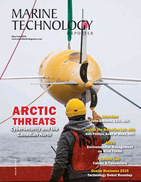 February 2025
February 2025

In this edition MTR explores the drivers for subsea exploration in 2025 and beyond
Read the Magazine
This issue sponsored by:

Authors & Contributors

Marine Technology Reporter is the world's largest audited subsea industry publication serving the offshore energy, subsea defense and scientific communities.
Subscribe
Marine Technology ENews is the subsea industry's largest circulation and most authoritative ENews Service, delivered to your Email three times per week
Subscribe for MTR E-news
Featured Companies
HydroComp, Inc.

Hydrodynamic and propulsion system design tools for naval architecture and the propeller trades – from concept to 3D CAD. Our core mission is providing engineering tools to develop ships, boats, and other marine vehicles – and their propellers – more efficiently and responsibly.
MetOcean Telematics

MetOcean Telematics, headquartered in Dartmouth, NS, Canada, provides complete end-to-end telematics services, with a focus on niche MetOcean solutions and custom Defence and Security products. A manufacturer of Iridium satellite solutions, drifters, buoys, beacons…

